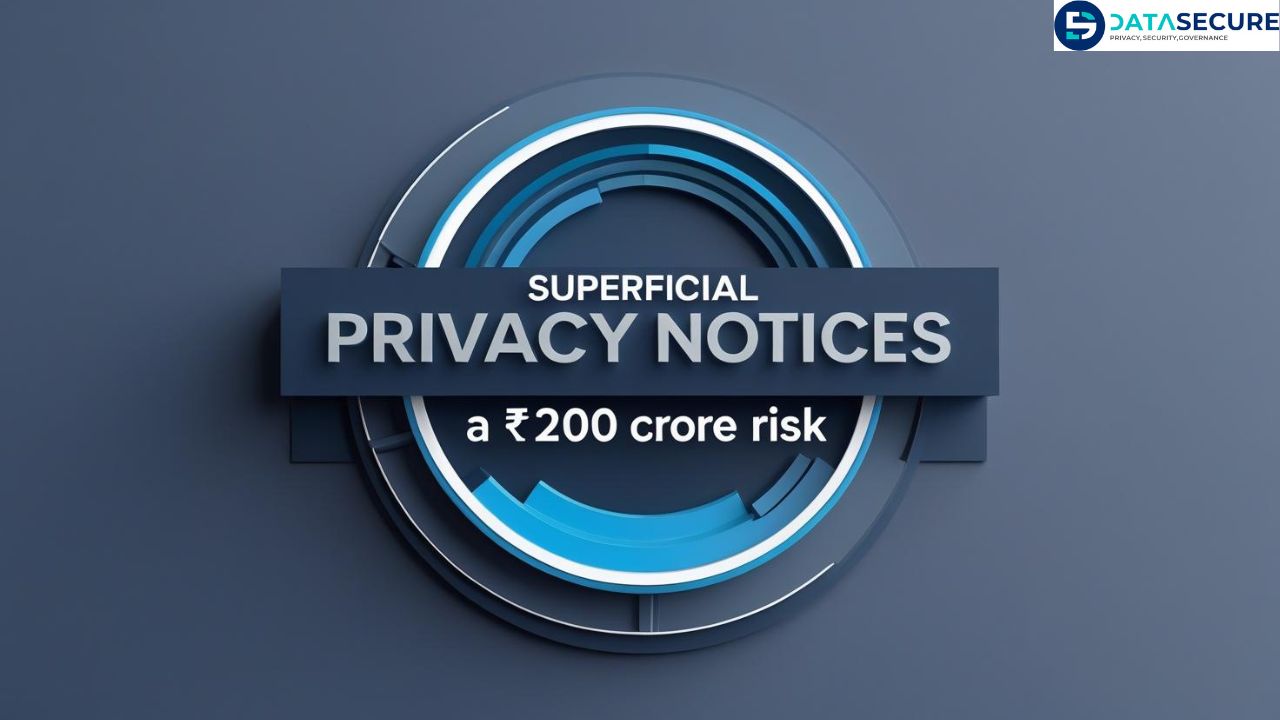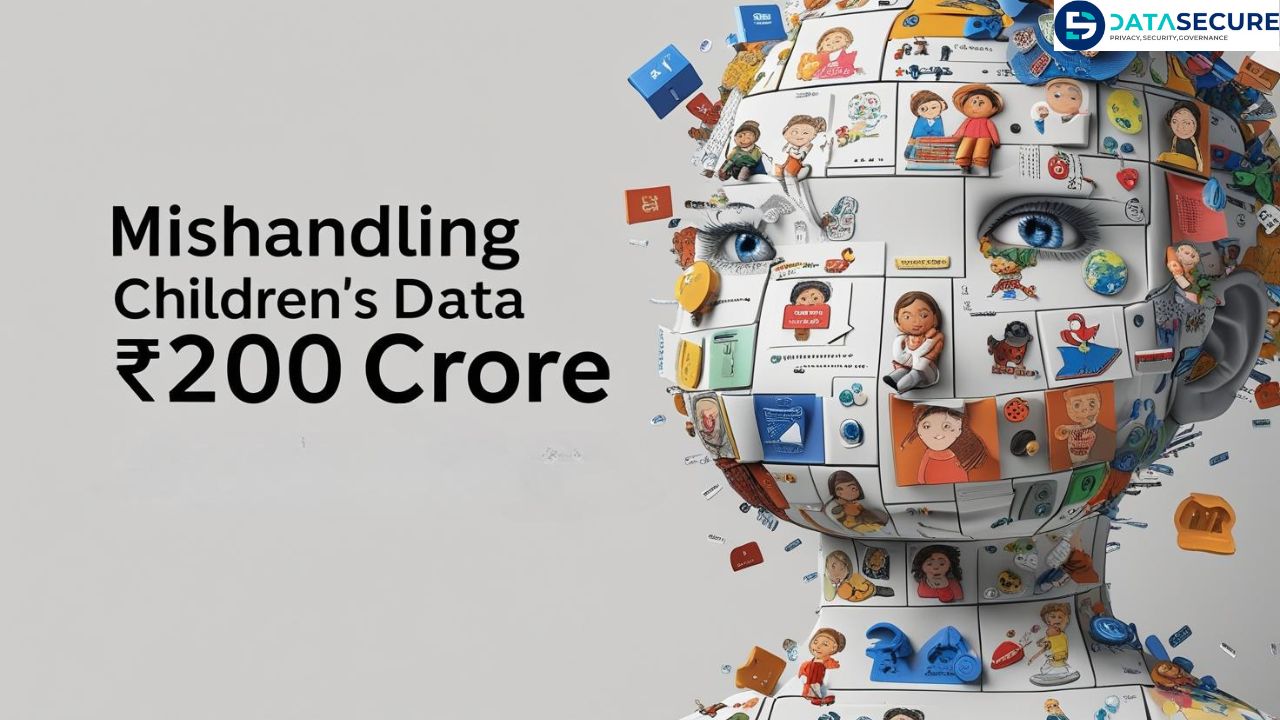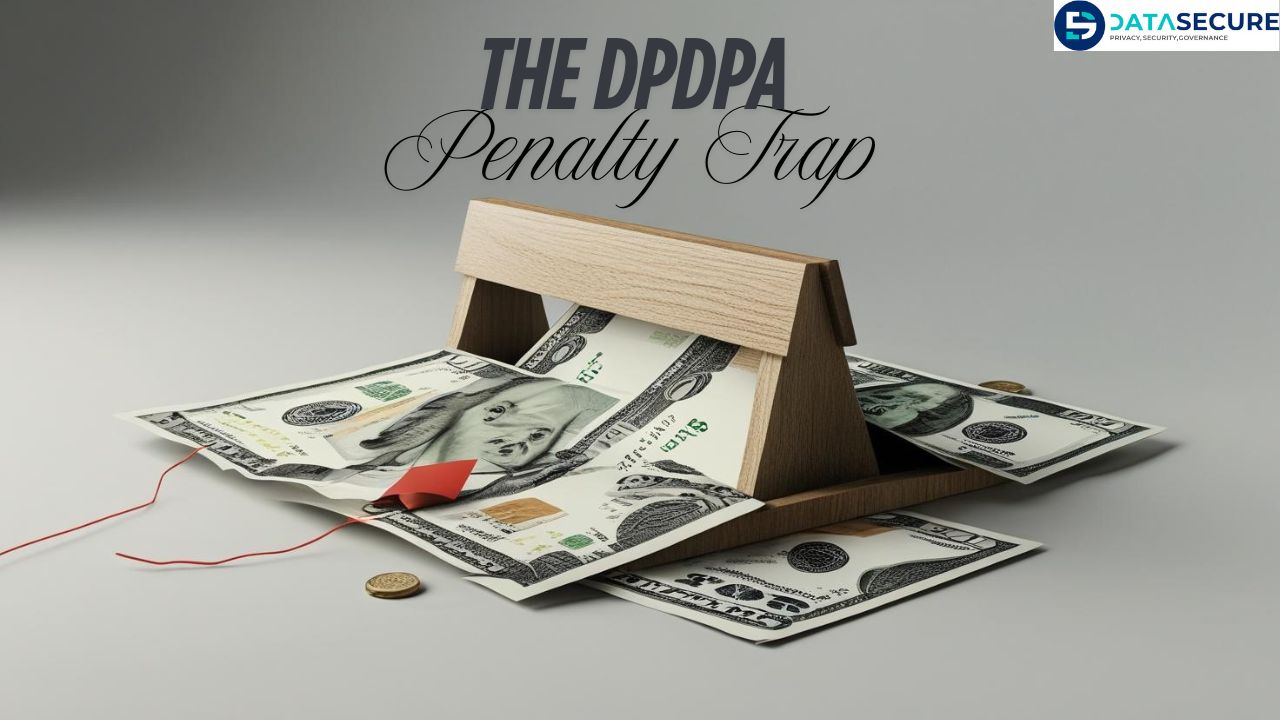Introduction: A New Era of Accountability
India’s long-awaited Digital Personal Data Protection Act, 2023 (Digital Personal Data Protection Act 2023 & Draft DPDP Rules 2025) marks a historic turning point in how personal data is processed, protected, and governed. With penalties reaching up to ₹250 crore for non-compliance, the Act signals a decisive move toward a rights-based, accountability-driven regime. While much of the early commentary has focused on consent, cross-border transfers, and Data Protection Board procedures, the real risk for organizations lies in the less conspicuous compliance lapses—the ones that are not headline-grabbing but can nonetheless trigger heavy penalties.
In this article, we dissect five hidden risk areas that, if left unaddressed, could lead to massive financial liabilities and reputational damage under the Digital Personal Data Protection Act 2023 & Draft DPDP Rules 2025.
Penalty Landscape Under the DIGITAL PERSONAL DATA PROTECTION ACT 2023 & DRAFT DPDP RULES 2025
Before diving into the risks, let’s understand the Digital Personal Data Protection Act 2023 & Draft DPDP Rules 2025 penalty framework. The Act empowers the Data Protection Board of India (DPBI) to impose monetary penalties for specific violations, with caps ranging from ₹10,000 for individuals to ₹250 crore for companies.
Key Penalty Triggers:
| Offence | Maximum Penalty |
|---|---|
| Breach of personal data obligations | ₹250 crore |
| Failure to protect children’s data | ₹200 crore |
| Non-fulfilment of Data Principal rights | ₹50 crore |
| Non-compliance with Board orders | ₹20 crore |
| Lack of notice or consent | ₹200 crore |
Note: Penalties are subject to adjudication by the Board considering factors like nature, gravity, duration, and mitigation efforts.
Risk #1: Superficial Privacy Notices – A ₹200 Crore Risk

Many businesses reuse standard privacy policy templates without tailoring them to their actual data practices.
Why It’s a Trap:
Privacy notices (or “notices to Data Principals”) are often treated as boilerplate legal documents. Under Digital Personal Data Protection Act 2023 & Draft DPDP Rules 2025, however, failure to provide a clear, itemized notice before or at the time of collection of personal data is not just a technical error—it’s a penal offence.
What the Law Says:
Section 5 of the Digital Personal Data Protection Act 2023 & Draft DPDP Rules 2025 mandates that every Data Fiduciary provide a notice describing:
- Purpose of processing
- Nature and type of data
- Rights of the Data Principal
- Grievance redressal mechanisms
- Consent withdrawal process
If any of this information is missing, vague, or misleading, the notice is invalid. Worse, processing based on an invalid notice can be deemed processing without consent—a major violation punishable by up to ₹200 crore.
Real-World Scenario:
An e-commerce app includes a generic privacy policy stating it collects information "to improve user experience," without explaining that it uses purchase data for targeted ads. A customer files a complaint. The Board investigates and finds the notice insufficient—the company faces both reputational loss and possible financial penalties.
Leading practices:
- Avoid legalese. Write notices in simple language.
- Be specific about each purpose of data use.
- Use layered notices, especially on mobile apps.
- Ensure notices are available in all languages relevant to your customer base.
Risk #2: Ignoring Data Principal Rights – The ₹50 Crore Oversight

Some companies assume they can respond to user data requests ad hoc.
Why It’s a Trap:
Digital Personal Data Protection Act 2023 & Draft DPDP Rules 2025 gives every individual rights over their data—including the right to access, correct, erase, and nominate someone to exercise rights on their behalf. Section 6 mandates the fulfilment of these rights in a manner that is effective and prompt. While the Act doesn’t specify time limits, regulators will expect swift responses in practice.
Most organizations underestimate the operational burden of fulfilling data subject rights (DSRs) under the Digital Personal Data Protection Act 2023 & Draft DPDP Rules 2025, such as:
- Right to access personal data
- Right to correction and erasure
- Right to grievance redressal
- Right to nominate
Failing to honour these rights, delaying responses, or not having a proper redressal system in place can be penalized by up to ₹50 crore.
What the Law Says:
Section 6 confers explicit rights to Data Principals. Section 13 makes it mandatory for Data Fiduciaries to implement systems for handling these rights efficiently.
Hidden Risk:
Unlike the GDPR, the Digital Personal Data Protection Act 2023 & Draft DPDP Rules 2025 does not specify timeframes for redressal. This ambiguity could mislead organizations into sluggish response times—an approach that the Board is unlikely to accept.
Real-World Scenario:
A user requests deletion of their account and associated data. The company responds only to the email but does not complete the deletion from backups or third-party platforms. The user escalates the issue. Upon inquiry, the Board finds the erasure incomplete and imposes a penalty.
Leading practices:
- Implement automated tools to handle access and deletion requests.
- Maintain logs of all Data Principal requests and resolutions.
- Regularly audit third-party processors for compliance.
Risk #3: Insecure Data Processing – The ₹250 Crore Breach Bomb

What seems harmless: Assuming that antivirus software or basic firewalls are enough.
Why It’s a Trap:
The costliest penalty under the Act—up to ₹250 crore—can be triggered by failure to implement reasonable security safeguards, even if no actual harm occurs.
What the Law Says:
Section 8(5) requires every Data Fiduciary to implement reasonable security safeguards to prevent personal data breaches. The Board can levy the highest penalty for violations under this clause.
What counts as “reasonable”? Though undefined, it is likely to align with global security standards like ISO 27001, NIST, or CERT-IN guidelines.
Emerging Pitfall:
Security is often seen as an IT issue. But under Digital Personal Data Protection Act 2023 & Draft DPDP Rules 2025, a misconfigured S3 bucket, unsecured API, or failure to encrypt backups can bring compliance officers under scrutiny.
Real-World Scenario:
A fintech startup stores sensitive KYC data in plain text on a cloud server with poor access controls. A researcher flags the vulnerability publicly. Though no data was stolen, the Board launches an investigation and imposes a penalty for lack of adequate safeguards.
Leading practices:
- Conduct regular vulnerability assessments and penetration tests.
- Use encryption for data at rest and in transit.
- Implement role-based access controls.
- Establish and test incident response plans.
- Train employees on phishing and cyber hygiene.
Risk #4: Mishandling Children’s Data – The ₹200 Crore Liability

What seems harmless: Allowing users to sign up without verifying age.
Why It’s a Trap:
Children’s data is a red-flag area. If your platform is even potentially accessible to users under 18, you may be classified as a Data Fiduciary processing children’s data, thereby triggering additional obligations.
What the Law Says:>
Section 9 prohibits:
- Processing of data that could harm the well-being of children
- Tracking or targeted advertising for children
- Data processing without verifiable parental consent
Violation = penalty of up to ₹200 crore.
Hidden Complexity:
Many apps (especially in gaming, edtech, and social media) do not conduct age gating or verify age at sign-up, exposing them to accidental violations.
Real-World Scenario:
A gaming app collects location and behavioural data to serve ads. It doesn’t ask for age during sign-up. A 16-year-old uses the app, and their data is processed without parental consent. The Board treats this as unlawful processing of children’s data.
Leading practices:
- Introduce age verification and gating mechanisms.
- Disable behavioural ads for users under 18.
- Use plain language explanations for children.
- Log parental consent verifications securely.
Risk #5: Weak Grievance Redressal – A ₹50 Crore Reputational and Legal Risk

What seems harmless: Routing data complaints to a generic customer support inbox.
Why It’s a Trap:>
Under Section 13, every Data Fiduciary must establish a grievance redressal mechanism, and failure to act on grievances in a timely and effective manner could attract a penalty of ₹50 crore.
What the Law Says:
- Organizations must designate a Grievance Officer.
- Data Principals can escalate unresolved grievances to the Data Protection Board.
- Non-compliance with Board orders is a separate offence (₹20 crore).
Missed Opportunity:>
Organizations often assign this duty to junior support staff with no real authority. The result? Escalated complaints and avoidable penalties.
Real-World Scenario:
A customer reports that their data was shared without consent. They receive automated responses for weeks. The issue is not resolved. The Board steps in and penalizes the company for not having a meaningful redressal process.
Leading practices:
- Appoint a dedicated Grievance Officer with decision-making authority.
- Track all complaints using a case management system.
- Set internal SLAs for response and resolution times.
- Escalate unresolved issues for executive review.
Conclusion: Compliance is a Continuous Journey
The Digital Personal Data Protection Act 2023 & Draft DPDP Rules 2025 introduces not just a compliance framework but a culture of proactive accountability. While fines are the most visible aspect, the true cost of non-compliance includes:
- Loss of user trust
- Operational disruptions
- Reputational damage
- Lawsuits and class actions
Most critically, the Act does not require malicious intent for penalties to apply—mere negligence or ignorance is enough.
Call to Action: Five Steps to Avoid the Penalty Trap
- Digital Personal Data Protection Act 2023 & Draft DPDP Rules 2025 Gap Assessment: Conduct a full legal-technical audit across systems, contracts, policies, and user interfaces.
- Privacy-by-Design Implementation: Build privacy controls into your product architecture, especially around consent, access, and erasure.
- Role-Based Training: Train customer support, marketing, engineering, and compliance teams on their data protection responsibilities.
- DSR Automation Tools: Use automated tools to handle access, correction, deletion, and grievance workflows.
- Documentation and Audit Trails: Keep logs of every consent, breach response, and grievance redressal activity to demonstrate compliance.
Final Word: Digital Personal Data Protection Act 2023 & Draft DPDP Rules 2025 Is a Strategic Lever, Not Just a Legal Mandate
Organizations that view the Digital Personal Data Protection Act 2023 & Draft DPDP Rules 2025 merely as a compliance checklist will miss the forest for the trees. In an increasingly digital India, where trust is currency, regulatory preparedness is a competitive advantage.
The ₹250 crore penalty may seem like a threat—but with the right controls, it can also be a wake-up call to build a privacy-first, user-respecting digital ecosystem.
We at Data Secure (Data Privacy Automation Solution) DATA SECURE - Data Privacy Automation Solution can help you to understand EU GDPR and its ramificationsand design a solution to meet compliance and the regulatoryframework of EU GDPR and avoid potentially costly fines.
We can design and implement RoPA, DPIA and PIA assessments for meeting compliance and mitigating risks as per the requirement of legal and regulatory frameworks on privacy regulations across the globe especially conforming to GDPR, UK DPA 2018, CCPA, India Digital Personal Data Protection Act 2023. For more details, kindly visit DPO India – Your outsourced DPO Partner in 2025 (dpo-india.com).
For any demo/presentation of solutions on Data Privacy and Privacy Management as per EU GDPR, CCPA, CPRA or India DPDP Act 2023 and Secure Email transmission, kindly write to us at info@datasecure.ind.in or dpo@dpo-india.com.
For downloading the various Global Privacy Laws kindly visit the Resources page of DPO India - Your Outsourced DPO Partner in 2025
We serve as a comprehensive resource on the Digital Personal Data Protection Act, 2023 (Digital Personal Data Protection Act 2023 & Draft DPDP Rules 2025), India's landmark legislation on digital personal data protection. It provides access to the full text of the Act, the Draft DPDP Rules 2025, and detailed breakdowns of each chapter, covering topics such as data fiduciary obligations, rights of data principals, and the establishment of the Data Protection Board of India. For more details, kindly visit DPDP Act 2023 – Digital Personal Data Protection Act 2023 & Draft DPDP Rules 2025
We provide in-depth solutions and content on AI Risk Assessment and compliance, privacy regulations, and emerging industry trends. Our goal is to establish a credible platform that keeps businesses and professionals informed while also paving the way for future services in AI and privacy assessments. To Know More, Kindly Visit – AI Nexus Home|AI-Nexus
